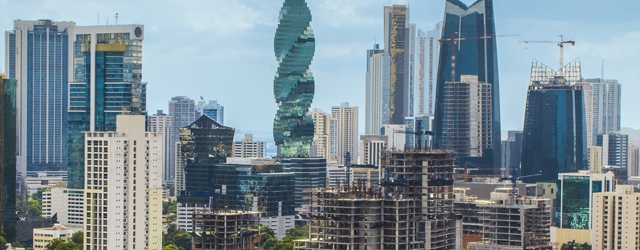Panama has a claim as economic growth champion of Central America. Still, for investors, growth isn’t everything, and in Panama, corruption is a significant problem.

Over the past decade, Panama has had one of the world’s fastest-growing economies, according to the World Bank, with an average annual growth of 7.2% between 2001 and 2013 that in the past two years fell to roughly 6%. That figure—lower but still relatively robust—is projected to hold through 2018.
With a few exceptions during and after the financial crisis, foreign direct investment inflows have risen annually, from $2.2 billion in 2007 to $5.8 billion in 2015.
The enlarged Panama Canal, which opened in June 2016, accounts for much of the total. The project has allowed Panama to re-stake its claim as an important logistics and transportation hub and a financial center—a status that continues to generate FDI opportunities. Other infrastructure investments have included bridges, a new subway in Panama City and a new bypass that helps reduce traffic within the city. Other current FDI opportunities include services connected to the canal, transportation, financial services and even tourism, which is overdeveloped in Panama City, but not in smaller cities.
The Panama Trade and Investment Agency, which offers “one-stop shop” assistance for investors, touts Panama’s advantages, such as a strategic location, political stability and a national currency—the balboa—pegged to the US dollar. That gives Panama a competitive edge over other Latin American countries, explains Gavin Strong, associate director for Central America at Control Risks Group: “Particularly within the Latin American context, there have been a lot of issues related to currency volatility over the past couple of years, and Panama is protected from them.” These and other advantages have attracted such blue-chip corporations as Coca-Cola, 3M, Johnson & Johnson, HSBC, American Airlines Group, the Maersk Group and Canon.
However, there are significant caveats. Corruption heads the list. “Unfortunately, it will be difficult for any company to set up business in Panama without being touched by corruption,” Strong says. Licenses and concessions have been granted in cloudy circumstances. The current crackdown on corruption appears politically driven—too narrowly focused on officials from the previous regime. The judicial system’s massive backlog also hampers business. To sidestep the judicial problem, international companies often rely on arbitration clauses.
Some of Panama’s issues highlight complex economic trade-offs. For example, labor costs in Panama are high compared with those in neighboring Nicaragua; however, security costs are much lower—especially in Panama City. “As a foreign company, you can invest there without having to spend a significant amount on securing the personnel, securing the office, securing the operations,” Strong says.
|
Vital Statistics |
|
Location: Central America |
|
Neighbors: Costa Rica, Colombia |
|
Capital city: Panama City |
|
Population (2015): 3,929,141 |
|
Official language: Spanish |
|
GDP per capita (2015): $13,270 |
|
GDP growth (2015): 5.8% |
|
Inflation (2015): 0.1% |
|
Currency: Balboa, pegged to the US dollar |
|
Investment promotion agency: Panama Trade & Investment Agency (Proinvex) |
|
Investment incentives: Liberal interpretation of trade zone status for business parks in Panama City |
|
Ease of Doing Business rank (2016): 70, up from 67 in 2015 |
|
Corruption Perceptions Index rank (2015): 72 |
|
Political risk: Slow pace of reform and declining public approval could pose risks for current stability. |
|
Security risk: Colombian illegal drug operations spill over the border. |
|
PROS |
|
No direct-line impact on FDI environment from Panama Papers scandal |
|
World’s second-largest free-trade zone |
|
Numerous free-trade agreements |
|
Cons |
|
Labor unrest |
|
Labyrinthine bureaucracy |
|
Inadequately educated labor force |
|
Refugees |
|
Money-laundering |
|
Reports of unfair court treatment of companies |
Sources: BMI Research, Newsroom Panama, Reuters, US State Department, Transparency International, World Bank
For more information on Panama, check out our Country Economic Reports at:
GFMag.com/gdp-data-country-reports.html



